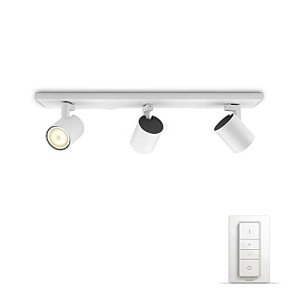Interior Lighting in the UK: A Comprehensive Guide
Interior lighting plays an important role in developing an atmosphere, enhancing functionality, and expressing individual design within homes and organizations. In the UK, where the weather condition can be unpredictable, efficient lighting is not only about aesthetics however also about making spaces feel warm, inviting, and useful. This article explores various aspects of interior lighting, including types, patterns, pointers, and regularly asked concerns.
Understanding the Importance of Interior Lighting
Lighting is often thought about the foundation of interior decoration. It affects state of mind, functionality, and the perceived size of spaces. The best lighting can:
- Enhance the architectural functions of a room.
- Emphasize artwork and design.
- Enhance safety and security.
- Influence efficiency in work areas.
- Create a comfy atmosphere for relaxation.
Types of Interior Lighting
Effective lighting design normally incorporates 3 primary types of lighting: ambient, task, and accent.
1. Ambient Lighting
This is the primary source of light in a room, offering total illumination. Typical sources include:
- Ceiling-mounted fixtures
- Chandeliers
- Recessed lighting
- Soft wall sconces
Ambient lighting produces a structure from which other lighting types can develop upon.
2. Task Lighting
Job lighting focuses on specific locations to help with activities such as reading, cooking, or working. This type of lighting helps to reduce eye stress and can drastically impact functionality. Typical sources include:
- Desk lamps
- Under-cabinet lights in kitchens
- Checking out lamps beside beds
- Track lighting focused on work surfaces
3. Accent Lighting
Accent lighting adds drama and highlights particular objects or locations, such as art work or architectural features. This kind of lighting can produce visual interest and depth in an area. Sources consist of:
- Picture lights
- Decorative lamps
- Uplighters
- LED strip lights along racks
Utilizing a mix of these lighting types can lead to a well-balanced and multifunctional space.
Popular Lighting Trends in the UK
The interior lighting landscape in the UK continues to progress, influenced by style patterns, innovation, and consumer preferences. Here are some popular patterns to see:
- Smart Lighting: The development of smart technology has actually transformed how people handle lighting in their homes. Smart bulbs and systems like Philips Hue allow users to manage brightness and color temperature via their mobile phones.
- Minimalist Designs: Sleek, basic designs that blend effortlessly with interiors are controling the market. Pendant lights with fragile frames, LED strips, and geometric shapes are especially stylish.
- Industrial Lighting: This trend showcases raw, unveiled materials. Modern Lamps UK and Edison bulbs provide a vintage touch that is both elegant and practical.
- Eco-Friendly Options: With increasing awareness of sustainability, numerous consumers are turning to energy-efficient LED options and fixtures made from sustainable materials.
Tips for Effective Interior Lighting Design
Designing an effective lighting strategy needs thoughtful consideration of different elements. Here are some tips:
- Consider the Purpose of Each Room: Every area has a various function. Consider what activities will occur and what type of lighting will support those activities.
- Layer Lighting: Employ several kinds of lighting within a room to create depth and flexibility. Integrate ambient, task, and accent lighting to enhance both aesthetic appeals and functionality.
- Usage Dimmers: Dimmers permit control over brightness levels, making it possible for users to change lighting according to mood and time of day.
- Incorporate Natural Light: Make the many of natural light sources like windows. Usage light, reflective colors for walls and furnishings to take full advantage of brightness.
- Believe About Color Temperature: Different color temperatures (measured in Kelvins) develop different atmospheres. Warmer temperatures (around 2700K-3000K) are relaxing, while cooler temperatures (4000K+) provide a more scientific or energetic feel.
Interior Lighting Mistakes to Avoid
To develop a well-lit area, it's important to avoid common lighting mistakes. Here are some errors to expect:
- Underestimating Wattage: Insufficient wattage can result in dim, unwelcoming areas.
- Overlooking Scale: Fixtures that are too little for a room can look out of location, while large fixtures can overwhelm an area.
- Over-reliance on Ceiling Lights: Relying entirely on overhead lighting can develop uninviting shadows; balance with extra lighting types.
- Poor Placement: Misplaced lights can develop locations that are too intense or too dark. Plan placements attentively.
FAQ Section
1. What is the distinction between warm white and cool white light?
Warm white light (2700K to 3000K) develops a relaxing, welcoming atmosphere, perfect for living rooms and bedrooms, while cool white light (4000K to 5000K) is more fit for offices as it boosts concentration and clearness.
2. How can I make the most of natural light in my home?
To maximize natural light, usage light-colored walls, tactically location mirrors to reflect light, and choose sheer window coverings that allow sunlight to pass through.
3. How do I choose the best lighting fixture?
Consider the size of your space, the design of your design, and the function of the location. Guarantee the scale of fixtures matches the room and matches the general aesthetic.
4. Are LED lights better than traditional bulbs?
Yes, LED lights are more energy-efficient, have a longer life expectancy, and can supply a series of color temperatures, making them a more sustainable lighting option.
5. What should I do if particular areas of my room stay too dark?
Consider including extra job or accent lighting to brighten those locations. Floor lamps, wall sconces, and even strategically placed table lamps can assist alleviate dark areas.
Interior lighting is a necessary aspect of home and company style throughout the UK. Comprehending the various types, current trends, and best practices can assist homeowner in developing spaces that are not only elegant but likewise practical. With thoughtful factor to consider and planning, effective lighting can change any environment, enhancing both ambiance and functionality for many years to come.

